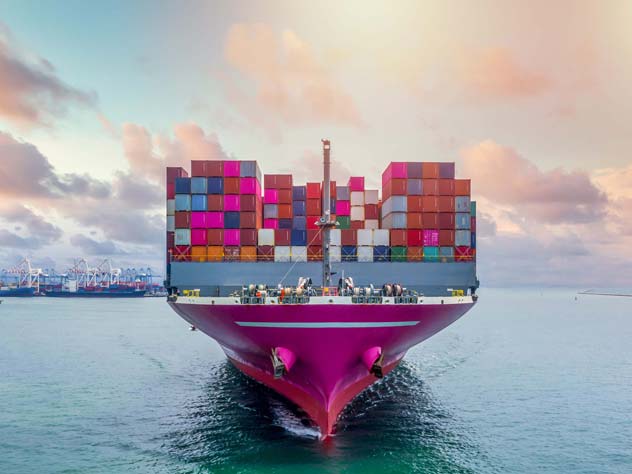On July 7, 2023, the "Decree amending the law that establishes the closure of the Benito Juárez International Airport of Mexico City, for the operations of the indicated air transport service to the public, published on February 2, 2023" was published in the evening edition of the Official Gazette of the Federation.
In said publication the following is provided:
"SINGLE DECREE. The FIFTH transitory Decree that establishes the closure of the Benito Juárez International Airport of Mexico City, for the operations of the indicated air transport service to the public, published on February 2, 2023 in the Official Gazette of the Federation, is amended to read as follows: "FIFTH. Concessionaires and permit holders that provide regular and non-scheduled national and international air transportation services to the public, with the exception provided for in this decree, have a maximum term of 148 business days, from the entry into force of this decree, to relocate their operations outside the "Benito Juárez" International Airport of Mexico City.
It is in our interest to keep you informed of this issue, so we want to point out that this publication extends the period from 108 to 148 business days to relocate cargo operations outside the AICM. The new deadline will be September 1, 2023.
Derived from this initiative, we invite you to see the sessions we have carried out:
Sincerely,
Kuehne+Nagel Mexico Air Logistics and Customs Team
Frequent questions

 1. What is Kuehne+Nagel's operating capacity at AIFA?
1. What is Kuehne+Nagel's operating capacity at AIFA?
Together with our strategic storage partner, we will have 2 warehouses at said airport with 9,600 m2 and 1,400 m2 for cargo that requires temperature control.
As well as refrigerated warehouses with a temperature range of 15° to 25°C and another chamber with a range of 2° to 8°C.

 2. What alternative airport options are there and what flight frequencies will they have?
2. What alternative airport options are there and what flight frequencies will they have?
Mexico as a country has several alternate airports with sufficient infrastructure to operate different flights, some with greater capacity than others. Among the options we have Guadalajara (GDL), Monterrey (MTY), Puebla (PBC), Toluca (TLC), Cancun (CUN) and Querétaro (QRO). The frequencies for now have not been defined since the airlines must evaluate their logistics.

 3. Is there any update on how to apply AICM permits in AIFA?
3. Is there any update on how to apply AICM permits in AIFA?
There is no provision on the part of the customs authority that allows the permits authorized for customs at the Mexico City International Airport (AICM-Customs 47) to be used for Customs at the Felipe Ángeles International Airport (Customs 85).

 4. Will AIFA have a customs agent area like the other airport? And where are they going to be located?
4. Will AIFA have a customs agent area like the other airport? And where are they going to be located?
CAAAREM (Confederation of Associations of Customs Agents of the Mexican Republic) has notified that they will be present at AIFA. It is pending that the details of the space that they will have assigned within the AIFA Customs be shared.

 5. Is the AICM only for passengers and the AIFA for cargo?
5. Is the AICM only for passengers and the AIFA for cargo?
Both airports will operate passenger flights. The difference will be as follows:
- AIFA: passenger flights that do not carry cargo + cargo flights
- AICM: passenger flights with and without cargo

 6. How can we identify that our cargo is coming on a passenger or freighter flight? And how is it defined?
6. How can we identify that our cargo is coming on a passenger or freighter flight? And how is it defined?
- In your quote you can identify if it is a passenger or cargo flight. However, from that moment they will be informed of the airport to use.
- Operationally, it is decided with which airline the cargo is moved based on its weight and dimensions, as well as the origin and destination. Each flight has certain restrictions and these are the ones that dictate which option will be used.

 7. In the event that the merchandise arrives on a commercial flight (passengers), is the cargo released at AICM or does the merchandise have to be transferred to the Felipe Ángeles airport?
7. In the event that the merchandise arrives on a commercial flight (passengers), is the cargo released at AICM or does the merchandise have to be transferred to the Felipe Ángeles airport?
If the merchandise arrives on a commercial flight, the dispatch office will be AICM-Customs 47.

 8. Are carriers authorized in AICM automatically authorized for AIFA?
8. Are carriers authorized in AICM automatically authorized for AIFA?
The carriers used by Kuehne+Nagel already have permission to enter AIFA, this was verified through VUCEM. We suggest confirming with your carriers that they already have this authorization.

 9. Can dangerous cargo be released at AIFA?
9. Can dangerous cargo be released at AIFA?
Customs is pending the addition of Customs 85 (Felipe Ángeles International Airport) to the list of Annex 21 of the general rules of foreign trade. If the fraction of your product to import / export is listed in Annex 21, you must wait for Customs 85 to be added. We suggest reviewing Annex 21 authorized to process the customs clearance of a certain type of merchandise. This annex establishes the reference at the tariff fraction level, but does not distinguish between dangerous general cargo products.

 10. What is AIFA's cargo flight capacity?
10. What is AIFA's cargo flight capacity?
Felipe Ángeles International Airport has a capacity of 400,000 tons per year.

 11. After July 6, will it no longer be possible to request a transit from AIFA to AICM?
11. After July 6, will it no longer be possible to request a transit from AIFA to AICM?
With some airlines it can be done, they have not yet confirmed the exact date of suspension of this service. In the case of requiring contracting as a dedicated service, you can quote directly with Kuehne+Nagel, please contact your sales executive.

 12. With this change, what do we have to review/ensure/implement as private companies? What is the direct impact on the supply chain?
12. With this change, what do we have to review/ensure/implement as private companies? What is the direct impact on the supply chain?
- They must ensure that the Customs Agent they use has a patent to dispatch at the Felipe Ángeles International Airport (AIFA), as well as carry out their Conferred Order procedures, PECE account registration for tax payment, etc.
- In customs matters, we recommend reviewing your import and export permits, to identify if it is necessary to request the modification/addition of other customs clearance for your merchandise. In which case, it is very important to start the corresponding procedures before the different government authorities.
- The carrier they use must ensure that they use safe routes, both for arrival and departure from AIFA.
- Evaluate if arriving at AIFA is a viable alternative for your business or evaluate if using an alternate airport would be beneficial for your operation.
- To assess whether there will be an impact on the supply chain, it would have to be valued by customer since each industry and logistics needs are very different.










